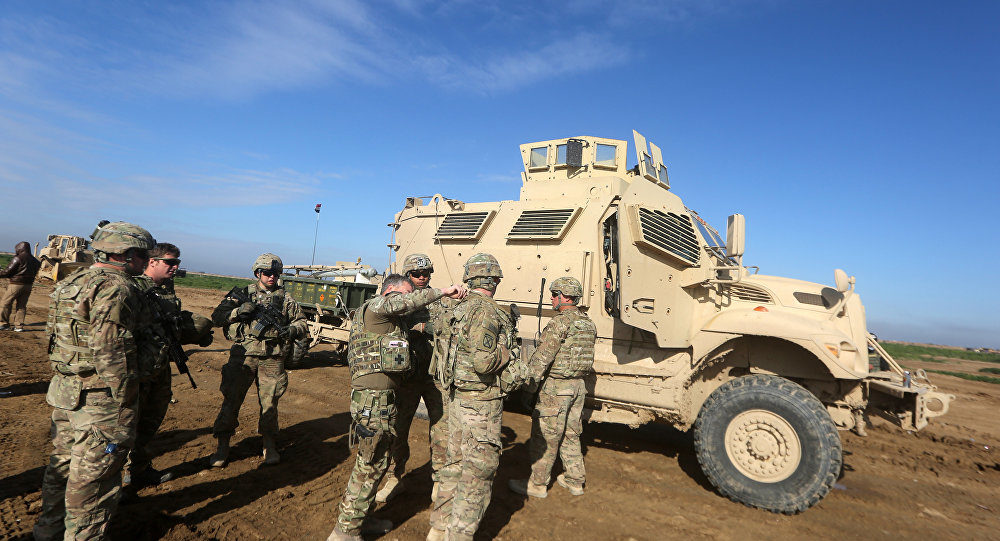Comment: Question is: are they taking what remains of ISIS with them?
The US secretary of defence has shared with journalists that the US troops, who, as Donald Trump argued the other day, should finally come home, are not actually doing so.
According to Defence Secretary Mark Esper, the current plan presupposes that US troops leaving Syria will head for western Iraq and the military will persist in its anti-Daesh* operations to make sure there is no resurgence of terrorism in the area.
Speaking to reporters while on a flight to the Middle East, the defence chief mentioned he had talked to his Iraqi counterpart about the plan to redirect over 700 of the 1,000 US troops, from Syria to Iraq, adding that the data was fluid and the details would be worked out in due time.
Per Esper, the troops leaving for Iraq will largely have two missions:
"One is to help defend Iraq and two is to perform a counter-ISIS* mission as we sort through the next steps", he said.
"Things could change between now and whenever we complete the withdrawal, but that's the game plan right now", Esper said referring to Iraq, where the US currently maintains around 5,000 troops, several years after Washington formally pulled its forces from there in 2011, bringing an end to a war that many considered to be a US occupation.
The withdrawal of US military forces from Iraq was a contentious issue in the United States and beyond for most of the 2000s, with public opinion shifting towards favouring a pullout.
In 2008, George W. Bush signed the US-Iraq Status of Forces Agreement, which stipulated a deadline of 31 December 2011, before which "all the United States Forces shall withdraw from all Iraqi territory".
Although it did so in 2011, three years later, in 2014, due to the advance of Daesh from Syria to Iraq's western provinces, the US was prompted to intervene again, alongside other militaries, to combat Daesh. In January 2019, Secretary of State Pompeo put the number of US troops in Iraq at no more than 5,000.
US President Trump has a number of times reiterated his rationale for pulling American forces out of Syria, stating as late as last Wednesday that "it's time to bring our soldiers back home".
Donald Trump's decision to withdraw troops from Syria closely followed POTUS's telephone conversation with Turkish President Tayyip Erdogan, in which he vowed not to hamper Turkish activity along Syria's northeastern border, where the country recently launched an operation called "Peace Spring" targeting the remaining Daesh in the area and local Kurds.
The latter sees the US pullout as abandonment of them, as the US had allied with the Kurdish-dominated SDF since the start of the Syrian conflict.
As Esper left Washington on Saturday, US troops were continuing to leave northern Syria, over a week after the Turks launched an offensive, which Erdogan promised to continue irrespective of "what one says" in the wake of a considerable backlash from the international community.
There continue to arrive reports of sporadic clashes between Turkish fighters and their Kurdish adversaries, whom Ankara views as having ties to the PKK, an organisation banned in Turkey as a terrorist outfit, despite a five-day truce deal cut on Friday between the US and Turkish leadership.




Comment: Sputnik also reports: Meanwhile the US has been funneling its terrorists in Syria through corridors towards Iraq. In Iraq, just a week ago, the government was placating a citizen uprising against unacceptable living standards - even the Iraqi PM himself called their motives "righteous" - but it's notable that a number commentators had, months before, predicted these protests would occur and assigned blame on dark forces fomenting discord in the region. It's no surprise, then, that unidentified snipers were observed at these protests, fanning the flames of an already troublesome situation.
See also: